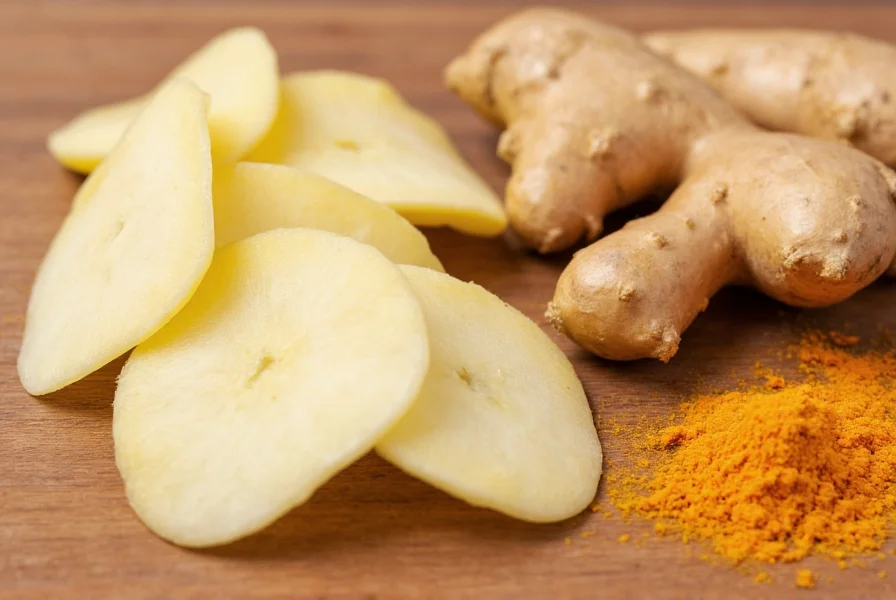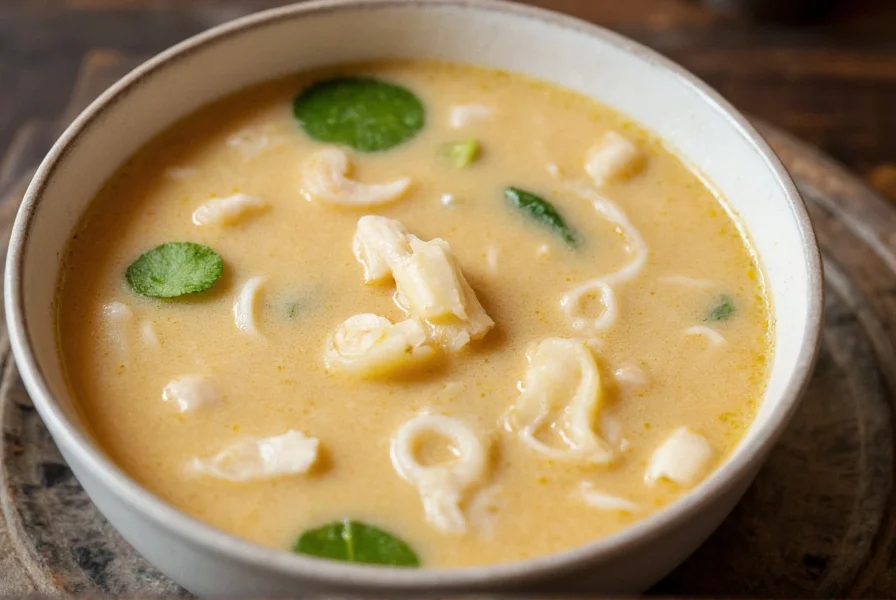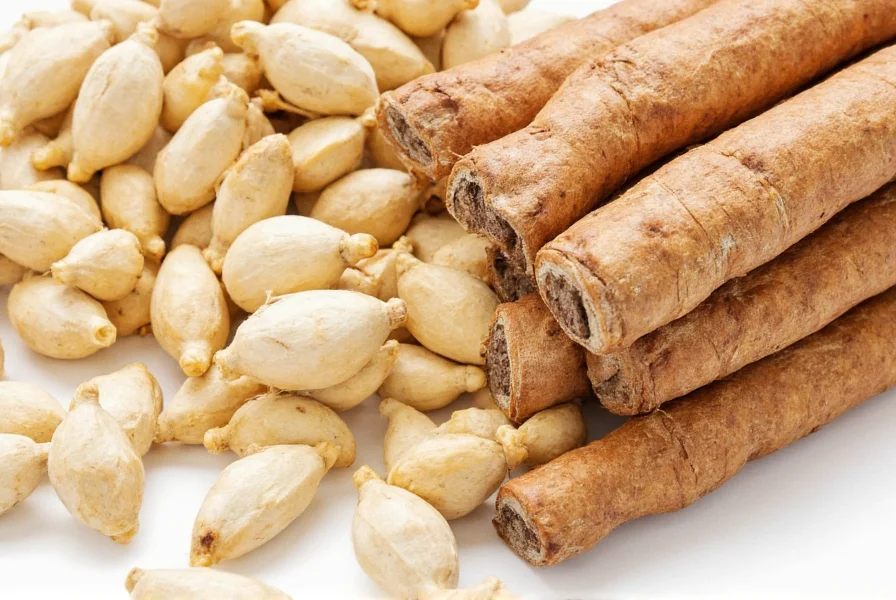When exploring what is galangal root used for, you'll discover it's far more than just a ginger substitute. This aromatic rhizome has been cultivated for centuries across Indonesia, Thailand, and Malaysia, where it's considered indispensable in traditional cooking and herbal medicine. While often confused with its cousin ginger, galangal possesses unique chemical compounds like galangin and kaempferide that contribute to its distinctive flavor and potential therapeutic properties.
Understanding Galangal: Beyond the Basics
Galangal belongs to the Zingiberaceae family, sharing botanical roots with ginger (Zingiber officinale) and turmeric (Curcuma longa). However, the difference between galangal and ginger extends beyond appearance. Galangal contains higher concentrations of cineole (also found in eucalyptus), giving it that characteristic pine-like aroma, while ginger's dominant compound is zingiberene, responsible for its warmer, spicier profile.
| Characteristic | Galangal Root | Ginger Root |
|---|---|---|
| Appearance | Paler, pinkish-tan skin; smoother texture | Darker brown skin; knobby, fibrous texture |
| Flavor Profile | Citrusy, pine-like, peppery, less spicy | Warm, spicy, pungent, slightly sweet |
| Texture | Harder, more fibrous | Softer, easier to grate |
| Primary Culinary Use | Thai, Indonesian, Malaysian soups and curries | Versatile in global cuisines, baking, beverages |
Culinary Applications of Fresh Galangal
Mastering how to use fresh galangal root requires understanding its unique properties. Unlike ginger, which can be used raw in many applications, galangal's tough fibers mean it's typically sliced thin or pounded into pastes for cooking. In Thai cuisine, fresh galangal is essential for authentic tom kha gai (coconut soup), where its citrus notes balance the richness of coconut milk. Indonesian rendang relies on galangal's complex flavor to complement beef and coconut milk during slow cooking.

When working with fresh galangal, remember these practical tips:
- Peel only if skin appears tough or damaged (often unnecessary)
- Slice paper-thin for soups or curries where you'll remove it before serving
- Pound with other aromatics for curry pastes to release maximum flavor
- Freeze whole roots for up to 6 months without significant flavor loss
Finding and Storing Galangal Root
Locating fresh galangal can be challenging depending on your location. For those searching where to buy galangal root near me, check Asian grocery stores (particularly Thai, Indonesian, or Malaysian markets), specialty food stores, or farmers' markets with diverse international offerings. Increasingly, larger supermarket chains are stocking galangal in their international or produce sections.
When selecting galangal, look for firm, smooth roots without soft spots or mold. Smaller pieces often have more concentrated flavor. Proper storage is crucial for maintaining quality—wrap unpeeled roots in paper towels and store in a perforated plastic bag in the refrigerator's vegetable drawer for up to three weeks. For longer preservation, freeze whole or sliced galangal in airtight containers.
Nutritional Profile and Potential Health Benefits
While not a substitute for medical treatment, galangal contains several compounds worthy of attention. Research suggests galangal root benefits and side effects include:
- Anti-inflammatory properties: Galangin, a flavonoid in galangal, may help reduce inflammation markers
- Digestive support: Traditional use for nausea relief and improving digestion
- Antimicrobial effects: Studies show activity against certain bacteria and fungi
- Antioxidant capacity: Contains compounds that may combat oxidative stress
It's important to note that most research on galangal's health effects comes from laboratory studies or traditional use, not extensive human clinical trials. Consult healthcare professionals before using galangal for therapeutic purposes, especially if you have medical conditions or take medications.

Substitutes and Culinary Adaptations
When you can't find fresh galangal, understanding substitute for galangal in Thai cooking becomes essential. While no replacement perfectly mimics galangal's unique flavor, these options work in a pinch:
- Ginger + lemon zest: Use 3 parts ginger to 1 part lemon zest for approximation
- Galangal powder: 1/4 teaspoon powder equals approximately 1 inch fresh root
- Combination approach: Ginger with a touch of black pepper and lemon juice
For authentic results, seek out frozen galangal (often better than dried powder) or specialty online retailers that ship fresh roots. Remember that dried galangal lacks the bright citrus notes of fresh, so adjust other ingredients accordingly when substituting.
Preserving Galangal's Quality
Learning how to store galangal root properly ensures you maximize both flavor and shelf life. Beyond refrigeration, consider these preservation methods:
- Freezing: Slice into 1-inch pieces and freeze in airtight containers (up to 6 months)
- Refrigerated in water: Submerge in water in a sealed container, changing water every 2 days
- Drying: Thinly slice and dehydrate at low temperature for powder or tea
- Vinegar preservation: Create a quick-pickled version for certain dishes
Properly stored galangal maintains its distinctive flavor compounds significantly better than ginger, which tends to degrade more quickly. This makes having a supply on hand particularly valuable for frequent Southeast Asian cooking.
Frequently Asked Questions
Is galangal the same as ginger?
No, galangal and ginger are distinct rhizomes from the same botanical family. Galangal has a harder texture, paler skin, and a more complex flavor profile with citrus-pine notes and less heat than ginger. While they share some culinary applications, they're not interchangeable in traditional Southeast Asian recipes where galangal's unique flavor is essential.
Can I eat galangal root raw?
Galangal is typically not eaten raw due to its extremely tough, fibrous texture. Unlike ginger which can be grated raw into dishes, galangal is almost always cooked to soften its fibers and release its aromatic compounds. In traditional preparations, it's usually sliced thin for soups (and removed before serving) or pounded into curry pastes.
What are the potential side effects of galangal?
Galangal is generally safe when consumed in typical culinary amounts. However, in medicinal quantities, it may interact with blood thinners due to its anticoagulant properties. Some people might experience mild digestive upset. Pregnant women should consult healthcare providers before consuming large amounts, as galangal may stimulate uterine contractions. Always consult a healthcare professional before using galangal for therapeutic purposes.
How do I prepare galangal for cooking?
For soups and broths, slice galangal paper-thin (no need to peel unless skin is damaged) and add early in cooking, removing before serving. For curry pastes, peel and pound with other aromatics using a mortar and pestle. When substituting for fresh in recipes, use 1/4 teaspoon galangal powder per inch of fresh root. Remember that galangal's flavor intensifies with cooking time, so adjust quantities accordingly.
Why is galangal important in Thai cuisine?
Galangal provides the distinctive citrus-pine aroma essential to authentic Thai flavors that ginger cannot replicate. It's a fundamental component of Thai curry pastes and soups like tom kha gai, where it balances the richness of coconut milk with its bright, complex notes. Traditional Thai cooking considers galangal irreplaceable for achieving proper flavor balance in many classic dishes, which is why substitutes often result in noticeably different taste profiles.











 浙公网安备
33010002000092号
浙公网安备
33010002000092号 浙B2-20120091-4
浙B2-20120091-4